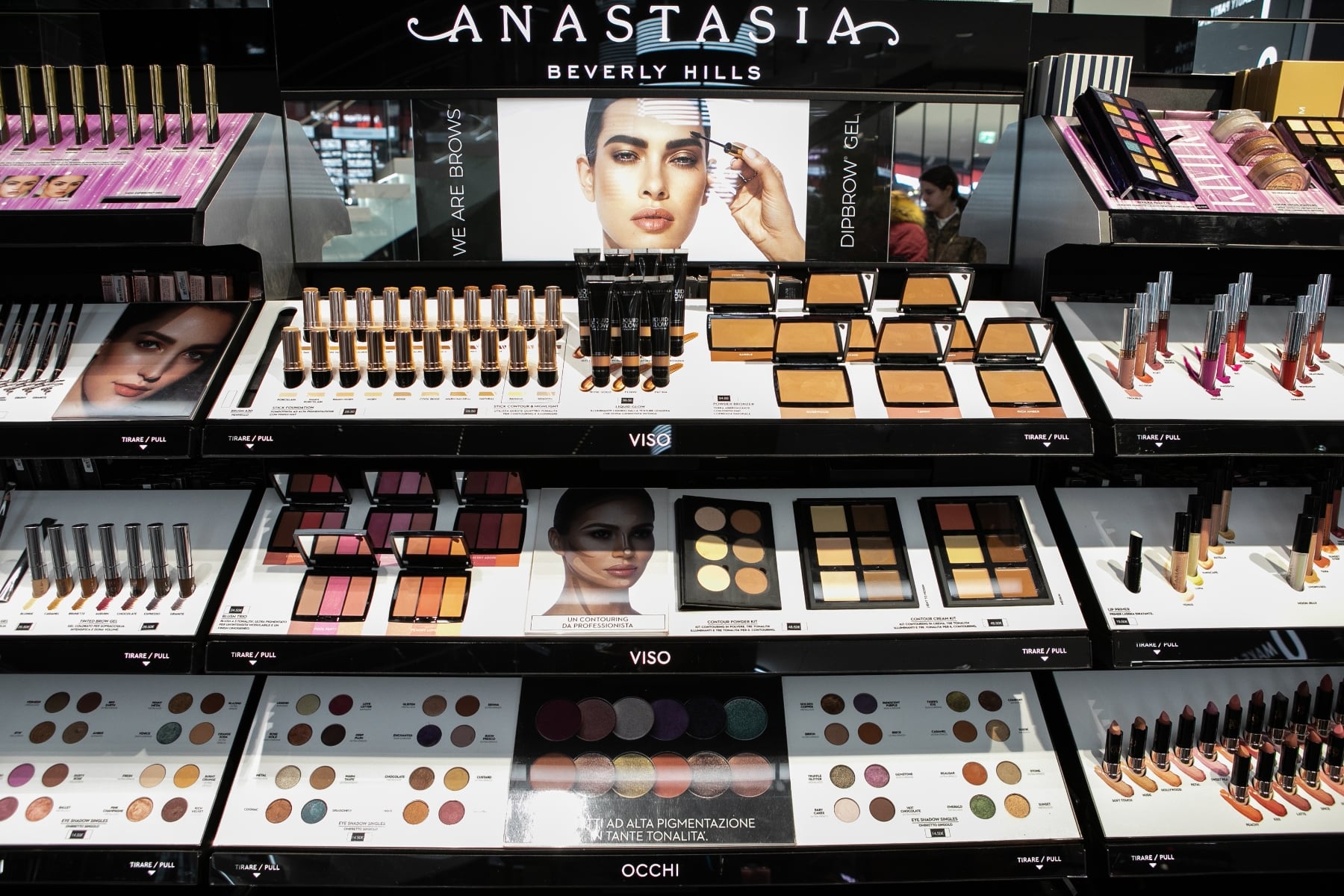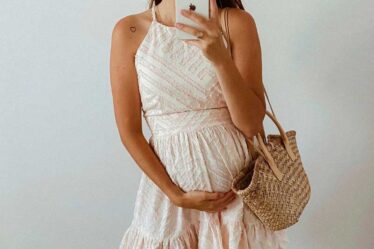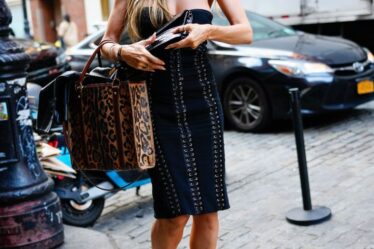
Anastasia Beverly Hills’ main investor wants out.
TPG Capital, which took a minority stake in the premium cosmetics brand in 2018 at a reported $3 billion valuation, recently kickstarted a process that would require the company to buy it out, or potentially force a sale or initial public offering, according to a report by the credit ratings firm Moody’s.
A happy outcome for all parties may prove elusive. At the time of the investment, Anastasia Beverly Hills was at the front of a new wave of independent beauty brands that had leveraged enormous followings on social media to take on incumbents. Founder Anastasia Soare told The Business of Fashion in 2018 that she planned to use TPG’s cash to expand her brand globally and ramp up direct-to-consumer sales.
But the deal proved to be something of a high water mark. Demand for ultra-glamorous, full-coverage makeup, the brand’s bread and butter, has softened, and consumers have started to favour lighter, fresher styles. Social media is now crowded with legacy brands and indies alike jostling for consumer attention (Anastasia Beverly Hills’ follower count on Instagram, at 18.5 million, isn’t much higher than the 17 million it boasted in 2018). Competitors have also riffed on its signature lip and eyebrow products, offering lower-priced versions at a time when shoppers are increasingly value-hunting.
Anastasia Beverly Hills is running out of time to reverse its slide. When TPG made its investment, it retained the right to redeem its equity for cash after six years if the company hadn’t sold or gone public, an option it is now exercising. Also looming on the horizon are more than $600 million in loans coming due next year, which analysts say will complicate – if not outright prevent – a sale. Last week, the credit rating agency Standard & Poor lowered its assessment of the firm to CCC-, reflecting a high risk the company will default or restructure its debt in the next six months.
TPG and Anastasia Beverly Hills declined to comment.
“The situation is pretty tough now … and the company’s performance is actually pretty weak,” said Dawei Ma, assistant vice president of corporate finance at Moody’s, which also rates the brand’s debt deep in junk territory.
Straight to the Top
Anastasia Beverly Hills was one of the first beauty brands built for the influencer era. Spun out of Soare’s high-end Los Angeles brow salon, frequented by the Kardashian family and other celebrities, the brand developed a niche following in the 2000s for products such as its Dipbrow pomade.
But the company really hit its stride in the 2010s, when Instagram became the biggest force in beauty marketing, kicking off an era of fast growth and frothy valuations for the platform’s buzziest brands. Anastasia Beverly Hills’ brow pencils were an early viral beauty product, and their success helped cement brows as a can’t-ignore beauty category. Soare’s daughter, Claudia, known by the moniker Norvina, quickly became an unofficial face of the brand and micro-celebrity in her own right.
Sales grew by an average of 64 percent each year between 2014 and 2017, according to S&P, topping over $300 million at the time of the TPG investment, according to media reports.
The brand wasn’t the only one attracting investors’ attention, as the direct-to-consumer digital marketing boom in the 2010s fostered a climate that allowed top brands to secure eye-popping valuations. Around the same time, cosmetics brands like Pat McGrath, Huda Beauty and Morphe also raised capital at valuations north of $1 billion.
But trends inevitably move on, and brands closely associated with a particular look are often left behind. In the 2020s, the thick and defined “Instagram brow” Anastasia Beverly Hills was known for gave way to the “laminated” brow — a brushed-up, more unfussy look made possible either with a professional treatment or with gel products, like British brand Refy’s Brow Sculpt or Glossier’s Boy Brow. Anastasia’s other core products saw similar attrition: the popularity of liquid lipsticks diminished as tinted oils and glosses like those from Rhode, Summer Fridays and Dior rose. A simple slick of bronzer or dab of glitter replaced intricate looks created with eyeshadow palettes.
Bloomberg reported that in the third quarter of 2023, the brand’s net sales declined 12 percent, to $69.8 million.
Those heady valuations of the late 2010s quickly turned into albatrosses, as brands struggled to keep delivering the dizzying growth rates that attracted investors. Morphe filed for bankruptcy in March 2023, while Pat McGrath’s investor, Eurazeo, quietly sold its stake in 2021 to a Brussels-based investment holding firm, Groupe Bruxelles Lambert. Another TPG investment from the same era, the multi-level marketing skincare company Rodan + Fields, defaulted on its debt in July.
Attempting a Comeback
Anastasia Beverly Hills still has name recognition, a built-in audience on social media and top wholesale partners in its corner, including Sephora and Ulta Beauty. It’s also launched new products, like a fresher-looking complexion product and a more modern brow gel, which dovetail more closely with current trends.
Two of its 2024 launches, the Brow Freeze Gel and Beauty Balm, a lightweight foundation, both won Allure Best of Beauty Awards. Another new launch, the Blurring Serum Blush, which has a more modern gel finish, leans towards a fresher look.
But the beauty category is more crowded than it was in 2018, and even the most successful premium products can have their hype cycle cut short by the arrival of cheaper dupes from brands such as Nyx and E.l.f. Beauty.
Anastasia Beverly Hills won’t be able to rely on free exposure on social media to win customers, as it did in the 2010s. Big beauty companies are a bigger force on Instagram, and now TikTok, than they were a decade ago, as are a host of newer indies.
“Independent, smaller brands come in, and they can reach consumers on their smartphones … consumers are not going to be brand loyal anymore,” said Katherine Heng, consumer products associate director at Standard & Poor’s.
A splashy marketing campaign could help Anastasia Beverly Hills rise above the fray. But the company’s high debt load limits its ability to splurge on conventional advertising.
Few Good Options
Anastasia Beverly Hills has steered itself back from the brink before. In 2020, S&P downgraded the firm and envisioned that a default could occur in the next year, but following a $61 million capital injection from Soare, and an improvement in its performance, the company was able to its improve cash flow and pay off its revolving credit facility.
The price tag for a bailout will likely be higher this time. Finding a buyer would probably be challenging, as they would ideally need to take on all its debt, as well as make TPG’s investment whole, said Amanda O’Neill, a consumer products director at S&P.
Refinancing would also be tricky for the same reason, and would likely put more pressure on the company’s liquidity, she said.
Sales of its core, long-standing products are down year-over-year. While new launches are performing well, said S&P’s Heng, the brand still over-indexes in prestige makeup, which has limited its ability to manoeuvre as trends have changed.
“It hasn’t been able to grow into a multifaceted brand,” said Heng.
Sign up to The Business of Beauty newsletter, your complimentary, must-read source for the day’s most important beauty and wellness news and analysis.



